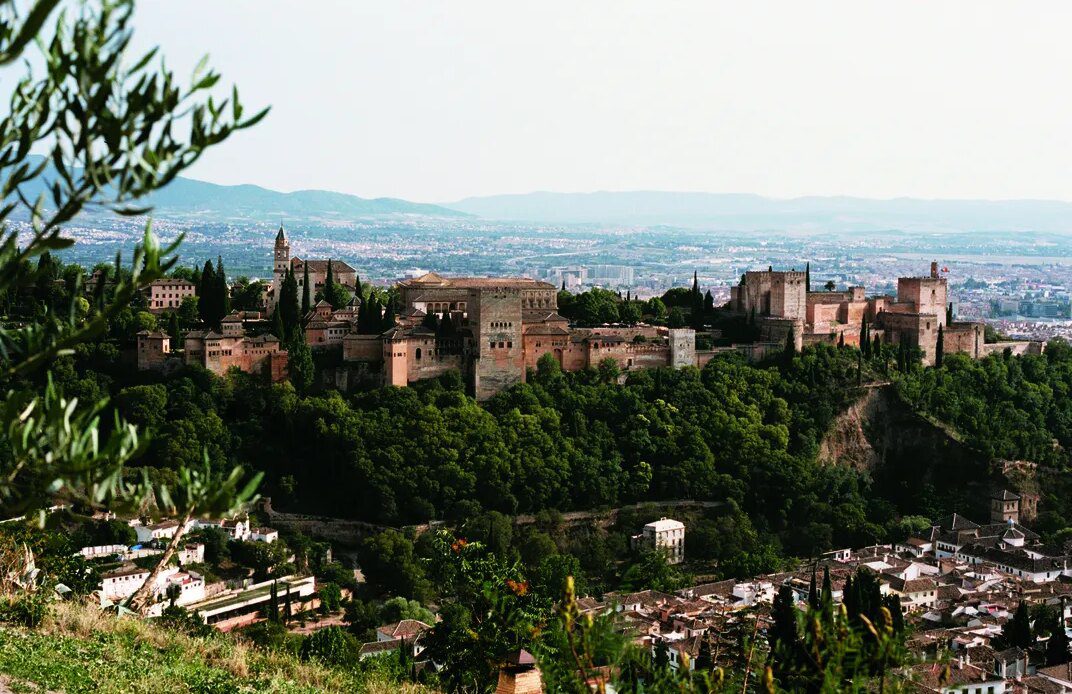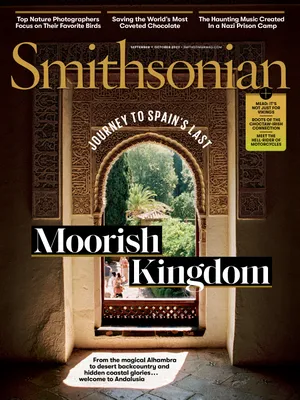It was well before dawn when I set off on foot through Granada’s oldest neighborhood, El Albaicín, an intricate brocade of cobbled streets overhung with fragrant jasmine trees. The first glow of sunlight revealed the titanic walls and turrets of the palace-fortress complex called the Alhambra looming above me on a spectacular crag. Poets have rhapsodized about the structure’s fairytale beauty since the finest craftsmen of the Arab world built it nearly 800 years ago. For over two centuries in the Middle Ages, it was the crown jewel of the Emirate of Granada, which stretched across Spain’s Mediterranean coast from modern-day Gibraltar past the snowcapped Sierra Nevada.
After crossing a stone bridge over the River Darro, I took a little-known back route into the palace called Cuesta del Rey Chico, a steep foot trail squeezed into a leafy ravine where the only sound was the water cascading from antique terra-cotta pipes. By now, the morning sunlight was making the Alhambra live up to its original name, al-Qal’ah al-Hamra, “the red fort.” An ornate archway led into the complex itself, an array of palaces and gardens covering 35 acres. The most famous site is the Nasrid Palace, named after the ruling dynasty. On my first visit, I had hardly known where to rest my eyes as I wandered its gorgeous chambers adorned with latticework and geometric patterns, its elegantly proportioned courtyards with burbling fountains, and the surrounding rose and orange gardens. Its interior walls are covered floor to ceiling with carved script in classical Arabic, which scholars have translated as praise for Allah, snippets of poetry and celebrations of the Nasrid rulers.
But on this morning’s visit, I was heading for a more mysterious world: the Alhambra’s secret network of underground tunnels and chambers.
Crowning a plateau above the city of Granada, the 35-acre Alhambra—the magnificent palace fortress of the last Islamic rulers of Spain—boasts stunning examples of Moorish architecture.
Charlotte Yonga
At least, that was my hope. The Alhambra is…
Click Here to Read the Full Original Article at Travel | smithsonianmag.com…

